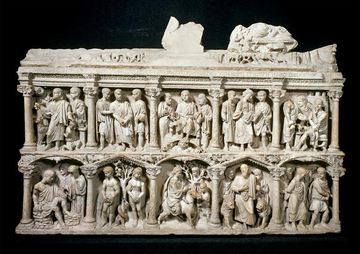Language/Skills Pathway
Alongside the choice between Late Antique or Byzantine History, you must also choose between two training pathways, dependent on your knowledge of languages or your primary interests in the field.
The first is the language training pathway, which offers intensive training in any one of the following ancient and medieval languages and, normally, their associated literatures: Greek, Latin, Old Church Slavonic, Armenian, Syriac, Coptic, Arabic, Middle Persian, and Hebrew.
The second is the skills pathway, and is designed for those who already have considerable competence in their chosen language(s) and are able to read primary sources in the original. You will receive instruction in one or two of a range of specialist auxiliary disciplines: papyrology, epigraphy, palaeography, numismatics, sigillography or artefact studies. You will also write a 10,000-word dissertation on a subject of your choosing.
Examination
Examination comprises several parts depending on the chosen pathway:
All students submit two 5,000-word essays on a topic of your choosing, subject to the approval of your supervisor. The first is submitted in the second term; the second in the third term. You can find examples of previous essay titles in the conclusion to this section.
If you select the language pathway, you will take a language paper; and a literature paper in the same language.
If you select the skills pathway, you will take a paper or papers in the chosen auxiliary disciplines; and a 10,000-word dissertation on a topic of your choosing, subject to the approval of your supervisor, and submitted in the third term.
Language, Literature, and auxiliary disciplines are taught throughout the year, and will normally be examined by unseen examinations at the end of the third term.
You should not apply to both the MSt and MPhil in this research area. Both courses have the same entry requirements.




